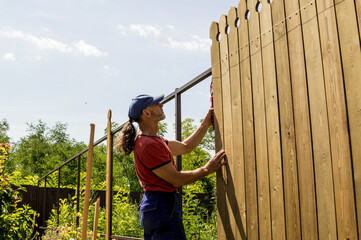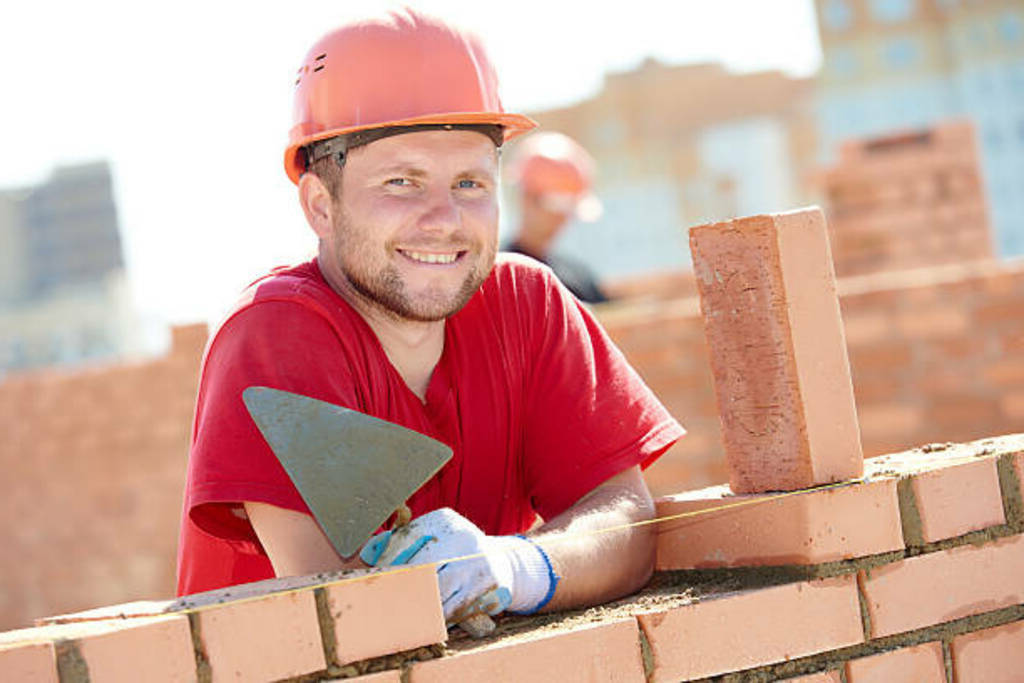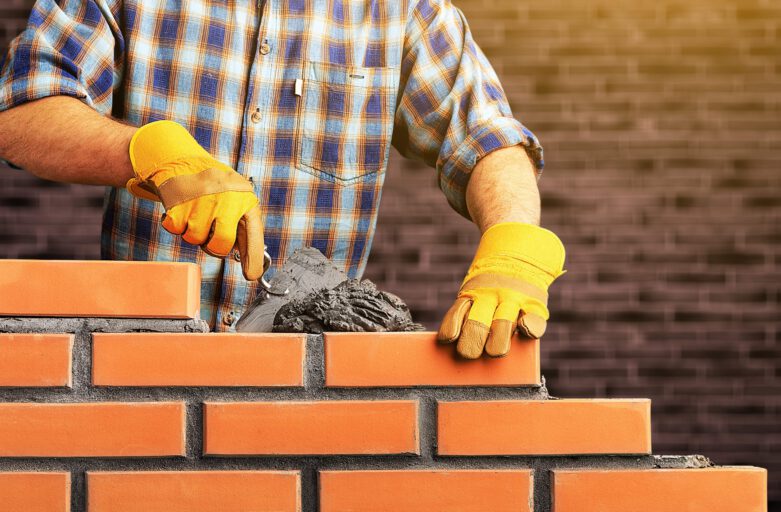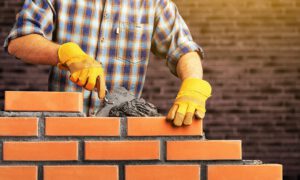Fencing In Charlotte is a physical boundary that helps define the limits of your property. It can also be a statement of your ownership and responsibility to the land.
A simple wood fence can be a great way to add visual appeal to your property while keeping unwanted animals and trespassers out. A corrugated metal and wood fence is a more utilitarian option that can be very functional in certain environments.
Protecting People and Animals
 Fencing is a major anthropogenic feature that affects wildlife distributions and movements, yet many studies have focused on individual fences rather than on how they interact with whole landscapes. This gap in knowledge hinders wise use of fencing to protect humans and wildlife.
Fencing is a major anthropogenic feature that affects wildlife distributions and movements, yet many studies have focused on individual fences rather than on how they interact with whole landscapes. This gap in knowledge hinders wise use of fencing to protect humans and wildlife.
A common use of fencing is to prevent wildlife from accessing crop fields, reducing damage caused by wild animals raiding gardens and damaging livestock. This is especially important in areas where human activities have encroached on the natural habitats of many species, leading to conflict between humans and wildlife.
Fences are also used to protect livestock from predators, which can cause significant damage and even death. This is an area where the use of electric fences has been particularly effective. These fences act as a gentle ‘keep out’ sign to any unwanted animal, keeping them away from the livestock without harming them.
Another important function of a fence is to help law enforcement tackle a particular type of crime called fencing, which involves the buying and selling of stolen goods. A fence buys items that have been stolen, typically from the public, from a thief for less than they would cost in a legal market. The fence then sells the goods to someone else for a profit.
The amount of profit a fence makes depends on both the norms in their area and the value of the goods they are buying and selling, which can vary widely. As a result, fences can play an important role in criminal enterprises by creating a market for stolen goods and encouraging other people to steal. As a result, law enforcement agencies work hard to tackle fencing, which may involve undercover operations where officers pose as thieves to try to buy and sell goods to them.
In addition to preventing animals from raiding crops, a fence can also prevent wildlife from crossing into people’s yards and homes, where they can cause damage to property and attack pets or children. This can be especially important for larger species such as deer and cattle that need a lot of space to roam and graze.
Establishing the Boundaries of Your Property
Fencing creates a physical barrier that keeps people from accidentally entering your property. This is important for several reasons, from criminals trespassing on your land to children or teenagers unknowingly traipsing through and picking apples off your trees. A fence can also help you establish your property boundaries and prevent you from accidentally encroaching on your neighbor’s land. If you’re unsure about your property lines, consult a professional and get a detailed survey done to ensure that you’re completely clear on the limits of your home’s property.
You should also check with your local government and homeowners association to make sure you’re not violating any rules. They may have regulations regarding who owns the fence, what material the fence must be made of, and even how close it can be to the property line or other structures on your property. Some communities also require a permit to build a fence and may have setbacks that determine how far the fence can be from public utilities and emergency access points.
If you’re building a new fence near an existing property boundary, it’s good etiquette to discuss the issue with your neighbor and come to a mutual agreement on how it should be positioned. This can help avoid the legal principle known as “boundary by acquiescence,” where a fence built on one side of the border becomes the official legal boundary line that overrules the deed and other property records.
Some thieves use fences to avoid detection and prosecution. If they’re selling a stolen product in bulk, the fence can help them conceal their identity and reduce the likelihood of police noticing multiple transactions. Fences can also prevent sellers from being tracked down by their customers and the police.
Some thieves will keep stolen goods for a while before selling them because it takes more time to find and contact potential buyers. This can help them recoup their investment before they have to report the goods stolen to law enforcement. Some petty thieves will even disassemble items and sell the parts separately, because this increases the profit margins.
Privacy
Fences can obscure your view of neighbors and passersby, allowing you to enjoy the outdoors without feeling like everyone is in your business. They also serve as a barrier, keeping unwanted pests out of your garden or yard. If you have pets or children, this provides an extra layer of security that prevents them from running away or becoming involved in a dangerous situation.
Adding a privacy fence to your property can increase its value. According to Progressive, homebuyers are willing to pay more for a property that has a well-designed, attractive privacy fence already in place.
A privacy fence can also help you keep your backyard garden, flower beds, and pool private, which makes it ideal if you have small children or pets that might run off. The high, impenetrable barrier blocks your view of any unwanted guests and gives you peace of mind when spending time in your backyard.
It can also serve as a way to delineate your property line from the neighbors’, especially if you live in an area with a high density of homes. Subtle things, such as your neighbor cutting their lawn border a couple of feet into your yard or parking their vehicles on your border, can add up and create an issue of property encroachment. A privacy fence can help you establish where your yard ends and theirs begins, preventing any issues that might arise later.
Privacy fences can also block out views that you don’t want to see from within your yard. For example, if your neighbor has a shed that’s full of broken appliances and random junk you don’t want to look at, a fence can hide it. It can also block out the view of your neighbor’s dirty laundry hanging on a clothesline or their untidy garden.
In addition to obscuring what you can and cannot see, a privacy fence is a physical barrier that would be difficult for thieves to scale. Even if they could make it over, the fence is made of solid material that would be incredibly painful to climb on top of while trying to steal anything valuable.
Weed Control
A fence is a great way to keep unwanted plants and grasses out of cultivated fields and garden beds. Regular maintenance including pulling, mowing or trimming can control weed populations. A specialty mower designed for clearing fence lines and posts can be an excellent investment.
Keeping weeds under control helps to reduce the need for chemical controls and protects your crops. Weeds take up valuable water, soil nutrients and sunlight from cultivated plants, depriving them of the resources they need to grow well. They also harbor pests and diseases that can spread to cultivated crops. For example, charlock, fat hen, shepherd’s purse and chickweed all carry clubroot, eelworm and cucumber mosaic virus.
Weeds that interfere with electric fencing can cause voltage and current loss, which reduces the energizer’s ability to keep the fence hot. As weeds and vegetation touch the fence wire, they pull voltage and amperage off the ground and into the weeds and vegetation. This causes the energizer to lose energy and eventually shut off. This damage can be costly to your production system.
An overabundance of weeds can also jeopardize the safety and effectiveness of your fence line for livestock. Clovers and field bindweed that get close to the fence can interfere with the electric current by creating a barrier between the energizer and the fence wire, which can lead to the energizer overheating and burning out. A low impedance energizer is designed to increase its output as fence load increases to overcome this issue and continue to supply the necessary amount of energy to the fence.
Spraying a 1-2 foot wide strip of fence line twice per year can kill the weeds and prevent them from returning, saving you time and money. Spraying is an environmentally safe option for controlling weeds, so long as you follow all herbicide label instructions.
Bricks, pavers and other hardscaping materials make an attractive, long-term weed barrier to stop unwanted growth from growing near your fence. Dig a trench 1 1/2 inches deeper and 1 inch wider than your bricks or pavers and lay landscape fabric in the trench before installing the bricks or pavers. Finish the surface with sand to keep the weeds from poking through.


